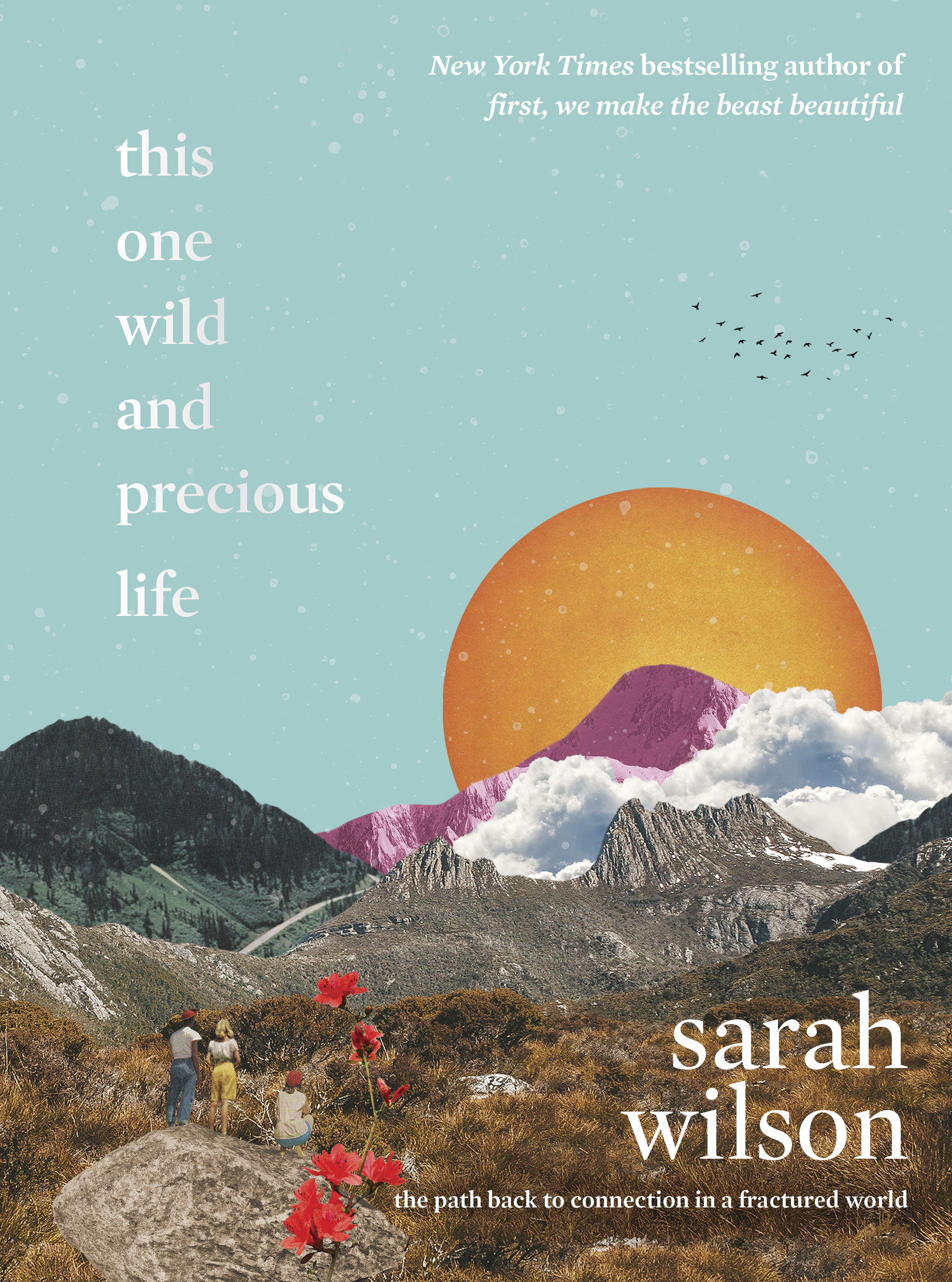
From THIS ONE WILD AND PRECIOUS LIFE: The Path Back to Connection in a Fractured World by Sarah Wilson. Copyright © 2020 by Sarah Wilson. Reprinted by permission of Dey Street, William Morrow, An Imprint of William Morrow.
~
Evolutionary psychologist Jeremy Sherman explains that there are two “standard” ways in our culture to connect to the spiritual essence of things.
There’s Western religion and there’s the Eastern traditions that we have turned to more recently. But he writes of a “third way” to connect. He calls it soul nerding.
Soul nerding is about studying our predicament with considered curiosity by “absorbing evolutionary biology, intellectual history, philosophy, anthropology, and above all, literature.”
I’d add poetry and art to this list, as well as music, particularly classical. Voltaire called it cultivating our garden. This connection to our garden is found not necessarily in the literal meaning of the words of some philosopher, or the landscape an artist presents in gouache. No, it’s the connection we feel in the stillness and attention required to appreciate a creative expression by a fellow human.
For me, when I read deep, I am immediately reconnected with a shared knowingness—in a group soul kind of way. To see that what you’ve been feeling has had words put to it triggers a sense of congruence. Also, to see that an artist has turned your perplexing pain into a thing of beauty…well, that can see me air-punch in celebration.
I love that there is such a thing as “bibliotherapy.” It can be traced to the Ancient Greeks. Above a library entrance in Thebes was the inscription “Healing place for the soul.” Sigmund Freud used literature in his therapy, and in post–World War I America libraries were issued with a prescribed course of reading for traumatized soldiers. It included Jane Austen. I also love that deep reading improves us at a biological level.
Neuroscience shows that when we learned to read 6,000 years ago, particular circuits were formed. These circuits sparked vital processes, such as internalized knowledge (which I take to mean “knowingness”), fair reasoning, the ability to be empathetic and to have insight.
Worryingly, the same research shows that the kind of skim reading we do now is shutting down these crucial processes. As one of the researchers noted, our inability to deep read is seeing us fail to “grasp complexity, to understand another’s feelings, to perceive beauty, and to create thoughts of [our] own.” Studies show young people now struggle to be able to read university texts, as well as life-affecting contracts and information relating to their political responsibilities (um, Brexit!).
In essence, skimming has made us sleepy, with all the now-familiar repercussions. As one researcher put it, “It incentivizes a retreat to the most familiar silos of unchecked information, which require and receive no analysis, leaving us susceptible to false information and demagoguery.” Which is precisely what we can’t afford right now.
(Re)learn long reading
Reading deep articles and nonfiction, as well as good literature, cultivates focus and reprograms our neurons. The stillness and time required for a long read (anything over 3,000 words) also allows our minds to formulate our moral position. This is like building a muscle.
You might like to try my approach.
I set aside time. Sunday afternoons work for me. I take that lull period between morning social activity or chores and the end-of-weekend dialing down and own it. I carve out an hour and sit on the couch. I make a pot of tea. It’s a ritual. It must be a ritual. I know a bunch of life-hackers and writers who set aside time in the morning before the pull of the day draws them outward. They make a coffee. Again, they ritualize it.
I turn my phone off. This is key. If mine is on and nearby, I tend to turn to it when a passage gets tricky or a concept requires deeper enquiry. I seek a quick reward hit. Which totally interrupts the muscle-building.
I pull long reads from curated sites and save them in one spot. I subscribe to a bunch of e-newsletters and follow op-ed and feature sections in respected papers from around the world. I draw on Quillette, the Huffpost Highline, The New Yorker, the Guardian, The Monthly and the New York Times. Some people use document saving programs. I simply open each article in a designated window on my laptop throughout the week and on Sunday work my way through each one. I turn off wi-fi on my laptop, enter full screen mode and dive in. You might use an e-reader. Or print versions (which have been shown to further increase the mindful experience).
When reading, I start slowly and allow my natural reading rhythm to speed up when it’s ready. Sometimes I breathe deeply to relax into what is an uncomfortable space—being still and focused like this is uncomfortable for our brains, which are so used to racing ahead to the “point.” That’s okay. I feel along with the writer’s commas and parentheses and absorb myself into their rhythm. This helps.
When my mind darts, looking for a reward, I gently bring it back to the words. The words on the page are like the mantra or the breath in meditation. It’s the repeated, gentle, present and firm bringing the mind back to the page that cultivates this antidote to the distraction that plagues us.
Often, I write notes in the pages of books or on a notepad. It’s good to coalesce and bring my own take to the writer’s thinking or idea. It allows me to formulate my position.
Sometimes I think that a lot of our despair stems from simply not engaging in practices that allow us to wrestle with our moral positioning and work out what matters to us. To have an ethical “home base.” What about you?
~
Check out: My long-overdue conversation with Sarah Wilson.
~










Read 2 comments and reply